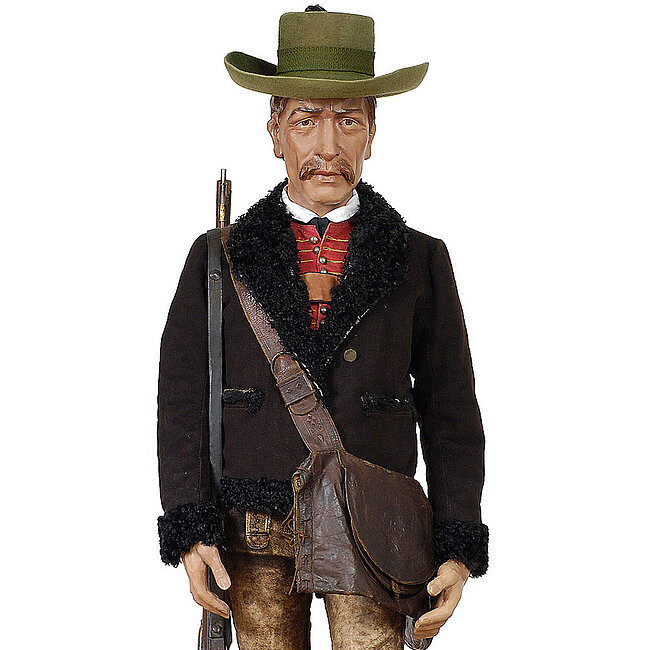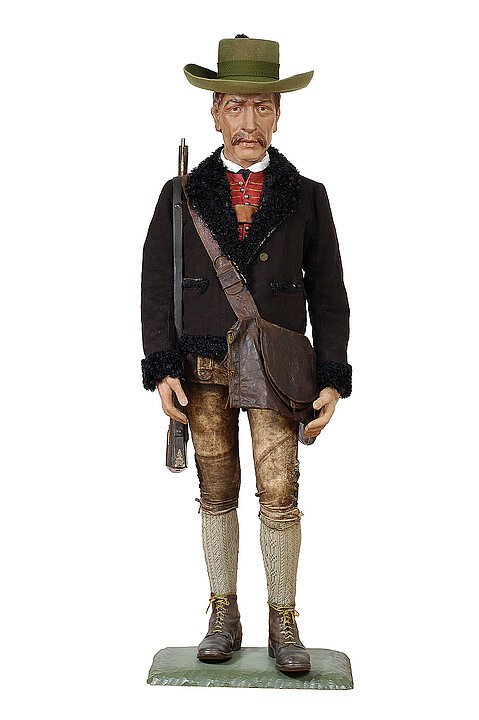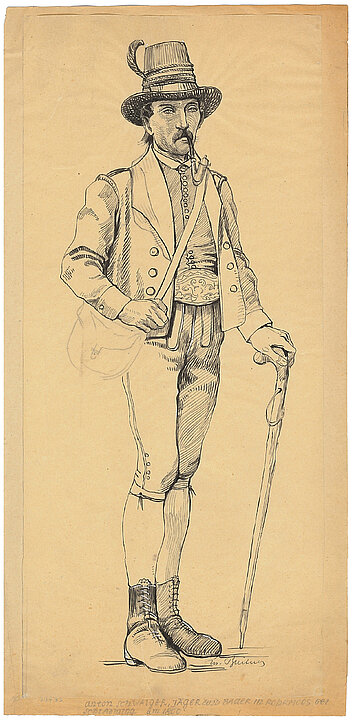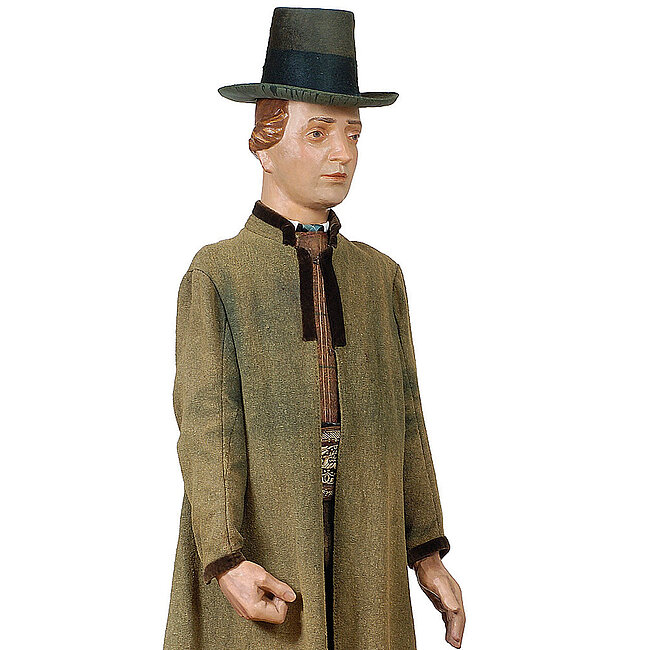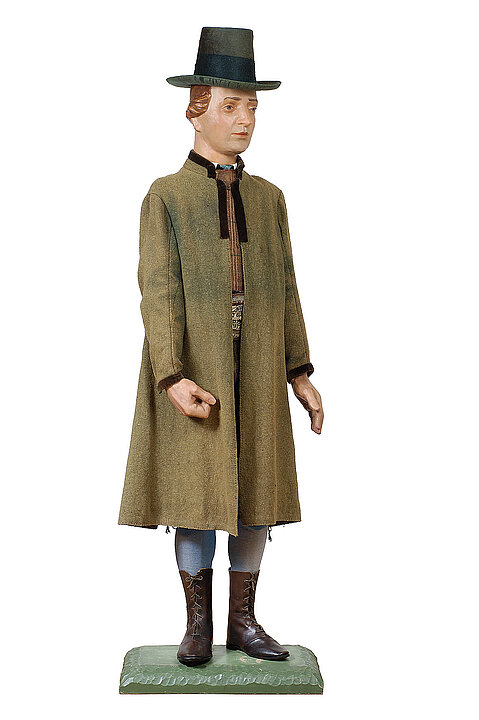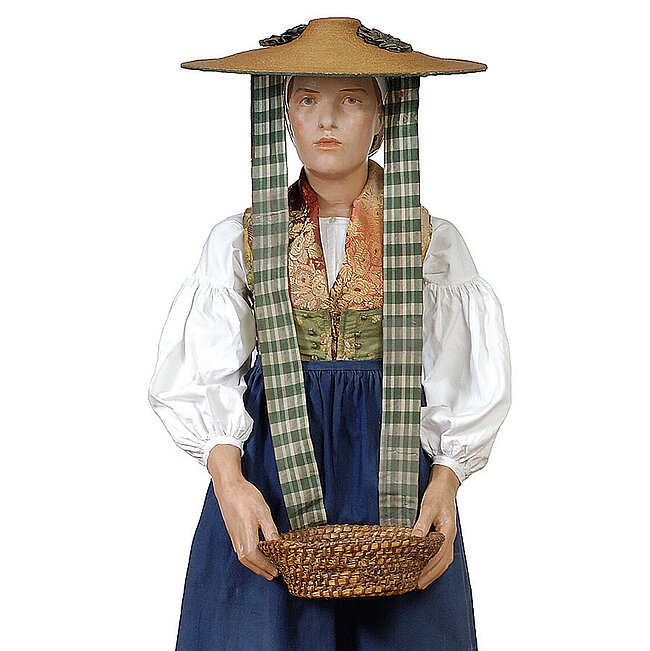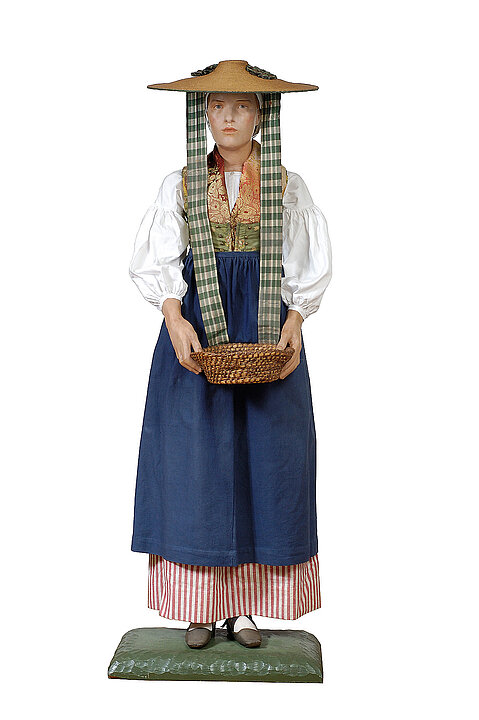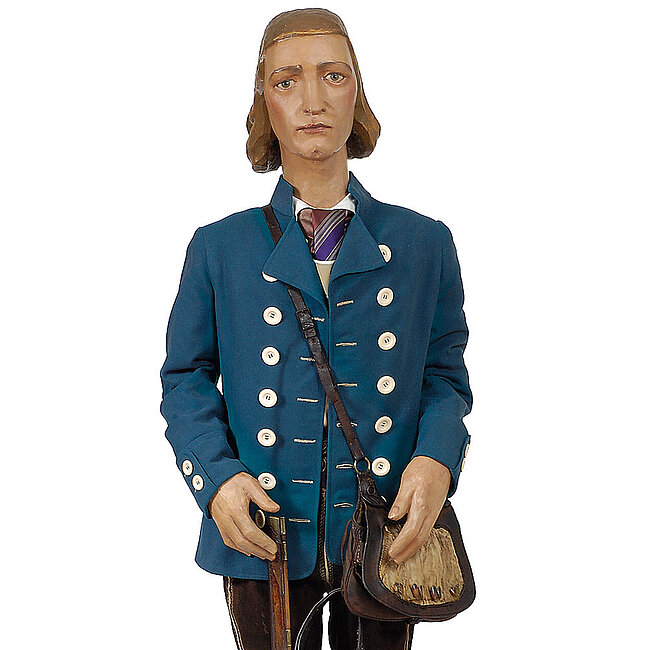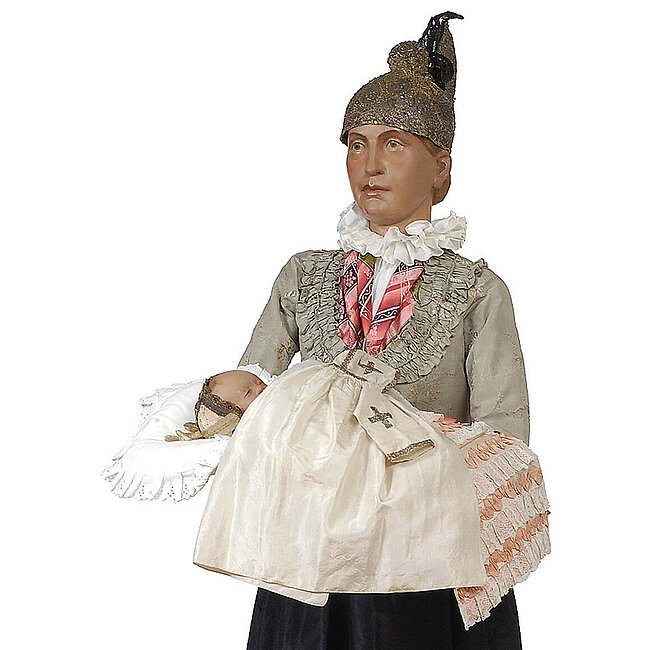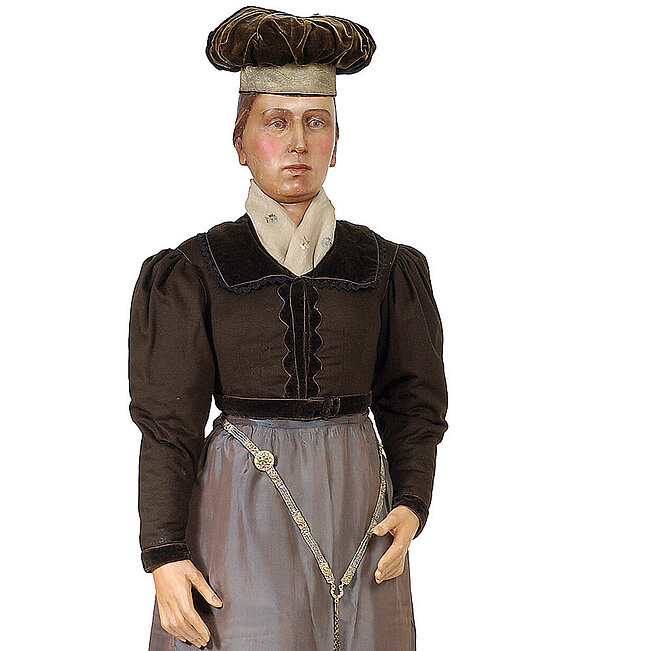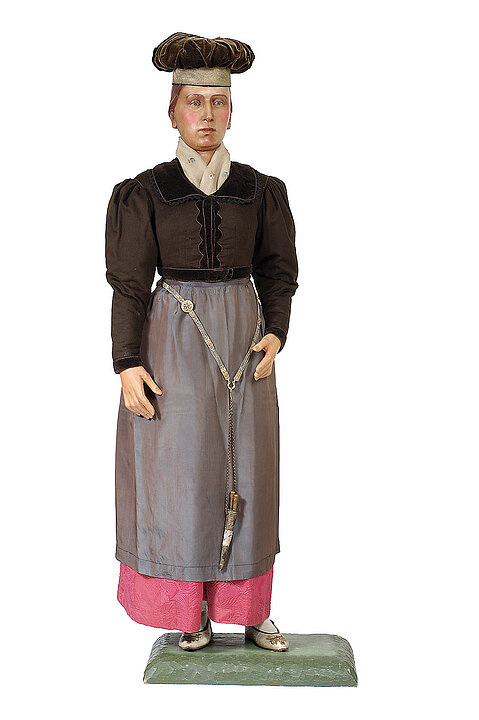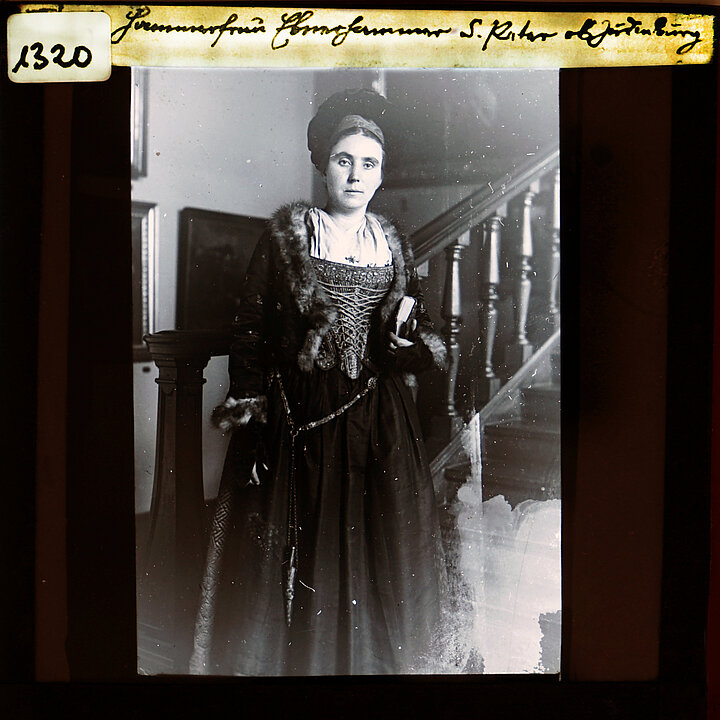The artist as hunter
This figure is a self-portrait of the sculptor Alexander Silveri. Viktor Geramb portrayed him as an Upper Styrian Hunter in the same display case as the Peasant Girl from Hitzendorf, which shares the facial features of Silveri's wife Hiltraud.
The clothing of the Upper Styrian Hunter was described as being his Sonntagsstaat ‘Sunday best’. Such clothing was usually worn for special occasions, such as a prize shoot, and not for hunting. The term Staat usually means ‘state or country’ but here it is derived from the Low German staatsch, meaning ‘splendid’ and ‘respectable’.
The clothing of the Upper Styrian Hunter is ostensibly based on the ink drawings by the artist Josef Breitner (left) and by Konrad Mautner (right)—both show Anton Schwaiger, a hunter and farmer from the Schladming area. As with some of the other figures, it is not known who wore the clothes on the Upper Styrian Hunter. Viktor Geramb put them together from donations and purchases. The jacket had entered the Joanneum’s collection in 1872 as a gift from a Baroness Thinnfeld. The hat is said to have come from Tyrol and was given to the museum by the Meran family in 1931. The rifle, known as a Kugelstutzen, was a gift from a respected businessman, Mr Kammerhofer from Turnau in August 1938. More precise information about the provenance of this object is not yet known. The shirt was sewn by Melitta Maieritsch by order of Viktor Geramb.



















